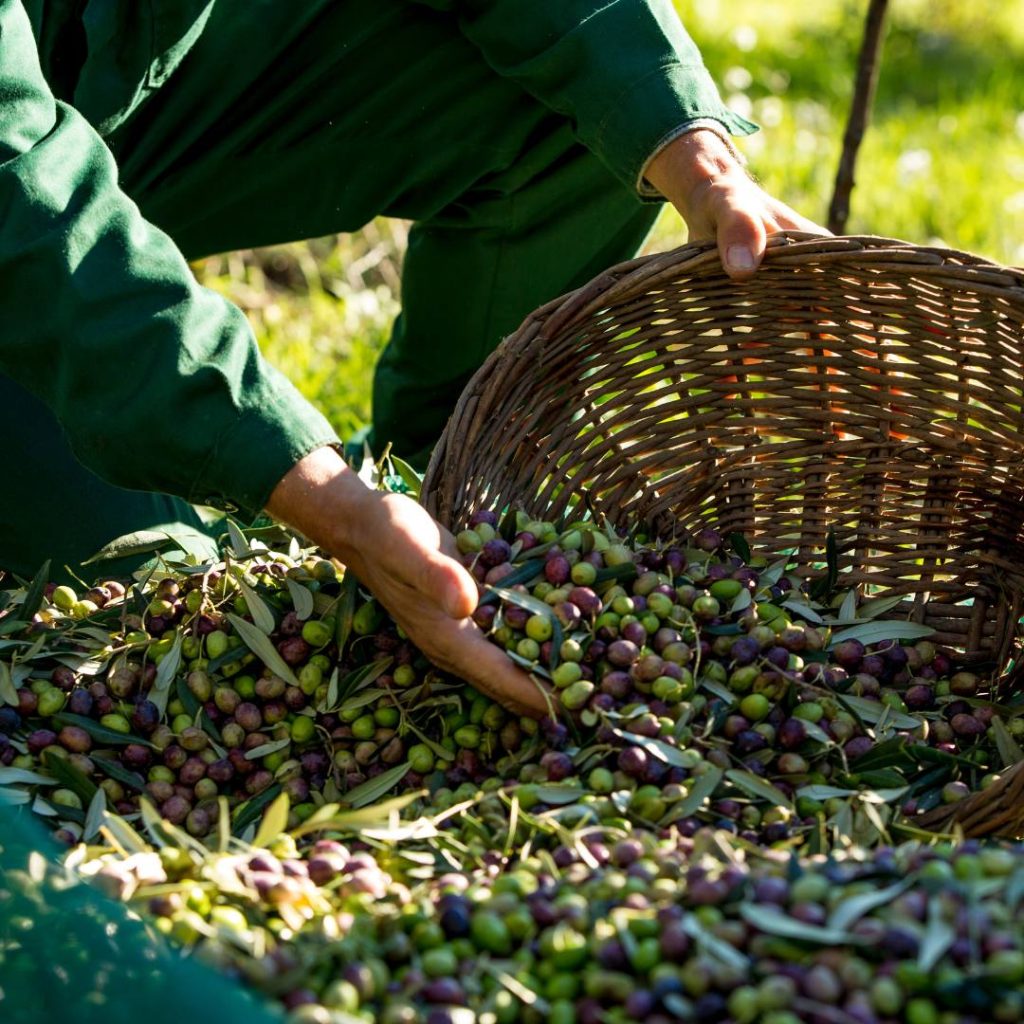Olive Harvest
Harvesting is a key part of determining oil quality. Performing it correctly directly affects the final organoleptic properties.
There are several hundred olive trees in the Mediterranean basin. Harvesting methods vary according to the type of plant and geographical shape of the soil.
Brushing: the simplest and most tiring system. It consists in the manual harvesting of the riper fruits. Combing: as the name suggests, the method consists in facilitating the detachment of the fruits through the use of special rakes that are passed on the branches.
Bacchiatura: consists in hitting the fronds with long sticks or special shaking machines, dropping the fruits on nets or nylon sheets.
Spontaneous fall: from this type of collection you do not get valuable oils. The method consists of placing nylon nets between plants and wait for the fruit to detach naturally.
During the period between falling and crushing, fermentation and oxidation reactions are triggered inside the olives, which negatively affect the organoleptic characteristics of the oil. The ideal time for harvesting varies from region to region. The milder climate of particular regions allows to perform scalar harvests that start in mid-November and can end around the beginning of May, obtaining particularly sweet and round oils.
In the colder areas, due to the autumn frosts, olives are harvested and crushed while still green, characterizing more or less strongly the aromatic tones of the oil produced.
There are several hundred olive trees in the Mediterranean basin. Harvesting methods vary according to the type of plant and geographical shape of the soil.
Brushing: the simplest and most tiring system. It consists in the manual harvesting of the riper fruits. Combing: as the name suggests, the method consists in facilitating the detachment of the fruits through the use of special rakes that are passed on the branches.
Bacchiatura: consists in hitting the fronds with long sticks or special shaking machines, dropping the fruits on nets or nylon sheets.
Spontaneous fall: from this type of collection you do not get valuable oils. The method consists of placing nylon nets between plants and wait for the fruit to detach naturally.
During the period between falling and crushing, fermentation and oxidation reactions are triggered inside the olives, which negatively affect the organoleptic characteristics of the oil. The ideal time for harvesting varies from region to region. The milder climate of particular regions allows to perform scalar harvests that start in mid-November and can end around the beginning of May, obtaining particularly sweet and round oils.
In the colder areas, due to the autumn frosts, olives are harvested and crushed while still green, characterizing more or less strongly the aromatic tones of the oil produced.
